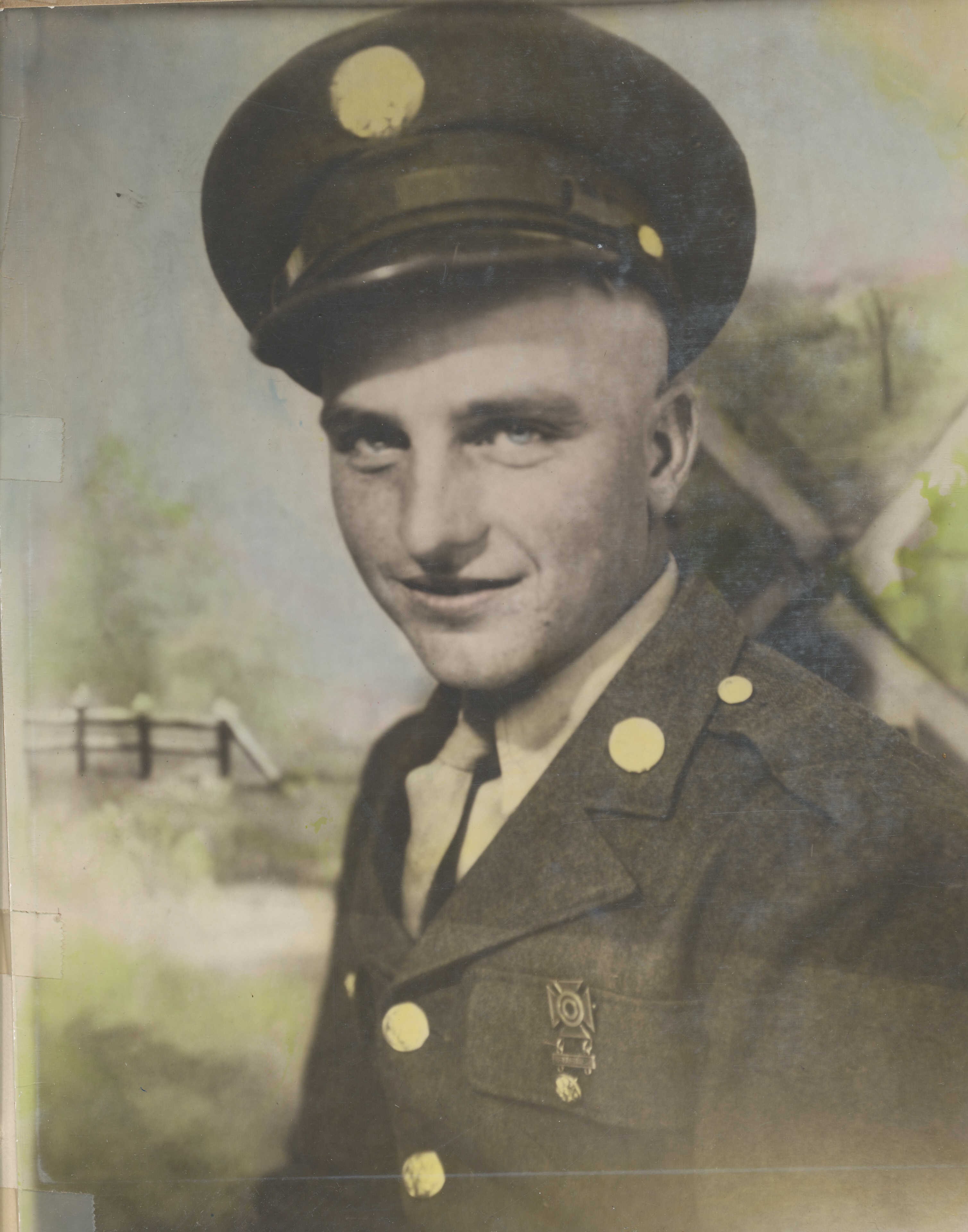Soldier Details
Division:
Highest Rank:
CorporalTheater of Operation:
Served:
Military Honors:
Honored By:
Biography
Earl E. Kempke's induction to the U.S. Army was on June 2, 1944 in Fort Leavenworth, Kansas. His basic training was at Fort Leonard Wood located in the Missouri Ozarks. He departed by ship on November 13, 1944 for the European-African-Middle Eastern Theater of Operations (EAMETO) November 26, 1944. Earl told of initially being sent to Italy before assignment to a fighting group. Earl E. Kempke joined Company B, 68th Armored Infantry Battalion on 24 January 1945 per paragraph 2, Special Order 17, Headquarter, 14th Armored Division, dated 23 January 1945. He came from the Second Replacement Depot, which at the time was located at Thaon, France. Pvt. Kempke was one of 53 enlisted Soldiers sent to the Company as replacements for the casualties it had suffered during the fighting in and around Rittershoffen and Hatten 9-20 January 1945. Company B had withdrawn from Rittershoffen around 2130 on 20 January 1945, and moved to Waldolwisheim where it arrived shortly after midnight. In Waldolwisheim, it consolidated and on 23 January moved to Batzendorf, where it received the group of replacements on 24 January. The new Soldiers did not have a lot of time to get used to their new unit. 25 January, the Company less one platoon, moved out to conduct an attack 200 yards northeast of Ohlungen. This action cost the Company one soldier missing in action and 3 wounded. Around 1500 on 26 January Company B left Ohlungen to return to Batzendorf, where it stayed until 1 February. On that day, the Company moved out to Bischwiller to prepare for future operations and conduct patrols. Company B, along with tanks from the 25th Tank Battalion conducted an attack on Oberhoffen on 6 February in which most of the town was secured. Although not mentioned by name in the Morning Reports, it can be safely assumed that Earl participated in the battle for Oberhoffen, The Company returned to Bischweiler and sometimes on February 7, moved back to Batzendorf until 18 February. According to the Morning Reports, the Company engaged in organizational duties during its time at Batzendorf. On 19 February, the Company moved to Ringeldorf, where it stayed until 27 February, receiving more replacements, welcomed back previously wounded comrades, and sent groups of Soldiers to temporary duty at the VI Corps Rest Center at Nancy for 5 days. Additionally, it also conducted a number of Patrol, during one of which it sustained two seriously wounded and one missing in action on 24 February in the vicinity of Uberach. 28 February saw the Company on the move again, this time to Saessolsheim where they arrived at 0500. 3 March must have been a proud day for Earl. That day, he was appointed Private First Class, along with 103 of his fellow Soldiers in the Company. 3 days later, the Company packed up and at 1845 left Saessolsheim for Ettendorf where they arrived at 2030. For the next 7 days, it would perform guard duties; one group of 30 Enlisted Soldiers and 1 Officer, would be attached for rations only to Company B, 125th Armored Engineer Battalion and guard for Combat Command B at Ringendorf, while the remainder of the Company were on guard and outpost duties around Ringeldorf. On 9 March, Earl received his Combat Infantryman Badge, meaning aside from the prestige associated with the CIB, he would also receive additional pay. The copy of Company Orders is very hard to read, and it would appear they do not specify for what action PFC Kempke received his CIB, but it was probably for the actions in Oberhoffen. On 10 March the Company assembled in Ettendorf and at 1800 took off on a dismounted march to Ringeldorf. 5 days later, it would move again. This time to Grassendorf, a mere 15 min road march from Ringeldorf. The Morning Reports only list usual organizational duties for the days from 16-17 March. On 18 March, the Company moved again. A 50+ km roadmarch took them to Salmbach, just short of the German Border and no enemy contact was reported. The next day, 19 March 1945, the Company moved again. This time into Germany. A 2.5 hours road march took them to Schweighofen, again with no enemy contact. On 20 March, the 14th Armored Division began its push to finally breach the Siegfried line. The 68th AIB started the attack at 0600 and by 0625 had reached the eastern side of Kapsweyer. Company B moved from Schweighofen to Kapsweyer and was the first to test the defenses of Steinfeld. The first attack by 3rd Platoon and tanks from Company B, 25th Tank Battalion was beaten back. Their attack on the road from Kapsweyer to Steinfeld and the field to the right, received intense machine gun fire, along with mortars and artillery fire. The Platoon was forced to pull back to the houses on the outskirts of Kapsweyer. In the afternoon, the Company’s 1st and 2nd Platoon, attempted an attack after a 17 minute artillery barrage with smoke to hide the attack from the enemy. Unfortunately, the wind shifted and the attacking platoons were caught out in the open, suffering heavy casualties. PFC Earl Kempke told that his platoon was pulled from the front to guard German soldiers in a farmhouse. While guarding the German soldiers from the doorway of the farmhouse, he was listening to the shelling directed toward the battle beyond, when the sound of one shell didn't sound quite right. Something instinctively told him to get out of the doorway. That is where the shell landed, resulting in the shrapnel wounds and hospitalization. The Morning Report for 20 March lists him as lightly wounded in action in the vicinity of Kapsweyer. Earl was evacuated to the 112th Evacuation Hospital. It is here that his fighting days with Company B, 68th Armored Infantry Battalion come to an end. Earl rejoined the Company on 24 May in Aschau am Inn from the 17th Reinforcement Depot. On 27 June 1945, Earl received 5 additional points for participation in the Central European Campaign. One week later, Earl received a new set of orders, assigning him to the 45th Infantry Division. Earl received a week's leave in England before returning to the United States with the 45th Infantry Division by ship. Earl's departure from England with the 45th Infantry Division began on or about Sept. 7, 1945. His ship arrived in New York on Sept. 14, 1945. Earl told of the joy of seeing the Statue of Liberty from the ship as they entered New York harbor. Earl was then assigned as a guard ferrying German prisoners from central US back to the East Coast for return to their homeland. Earl was discharged from the U.S. Army at Camp Shelby, Mississippi on June 9, 1946 with a rank of Corporal.


